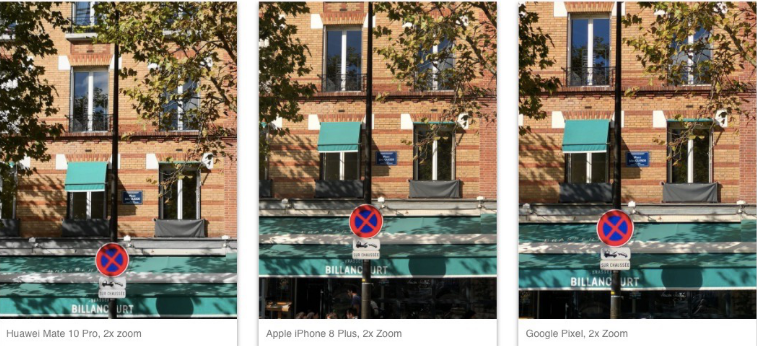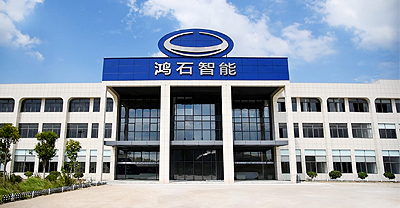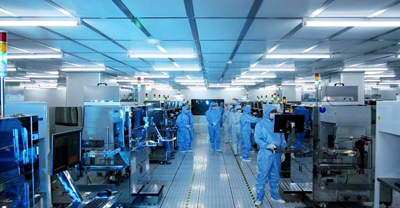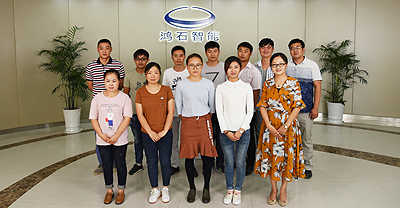Since the advent of mobile AI chips, this series has tracked, analyzed and reported many new changes in the mobile phone field. But if I were to summarize where the biggest change happened after the AI collided with the phone, there might be only one answer: the camera.

In terms of technical logic, the most significant improvement of mobile phones equipped with AI computing processing unit combined with their own GPU image processing capacity is in image content generation, recognition and processing. Whether it's beauty, beauty, or video, the algorithm can give you beauty.
But the reality is that high-end machines have to embrace AI in unison, and there may be deeper industrial tensions and real problems. Mobile AI has also brought more than a simple upgrade to "take photos and look better".
In this paper, we will refer to huawei Mate 10, iPhone X and Google Pixel 2 smart phones with AI capabilities and computing units to discuss the changes brought by AI to the camera and shooting functions of mobile phones.
Once we thought phones could only make calls and text messages, then buang's phone exploded into today's "omnipotent" smartphone. With the arrival of AI, the camera may be experiencing a similar explosion.
Mobile photography has entered deep waters, creating differences only with AI
Why did apple, Google and huawei's mainstream flagship devices all enter the AI era in just a few months?
The most immediate reason, of course, is the inevitable annual battle of camera power between high-end computers, which has now entered the stage of excruciating bayonets.
I once chatted with a photographer friend who loved to write a photo evaluation of mobile phones. He thought it was really a pain to write a photo evaluation of mobile phones in these two years. Because the camera is so close to each other at similar prices. I took the contrast pictures of various scenes, one is strong, the other is strong, and I can't conclude the result at all. Even strictly following the standards of professional organizations like DxOMARK, the results are mixed.
There is also a feeling that Moore's law is close to breaking down in the cell phone's optical hardware and camera units. As dual-lens, large-aperture and multi-megapixel cameras become standard, the core unit community of the camera seems to have been solidified. But phones are still coming out year after year and improving year after year. What's more, for a high-end phone, the camera part is absolutely bloody, and it should never be left behind. It's a headache to think about the developers and product managers behind the phone.
Even at the leading apple, the camera has struggled in recent years. Even with photos from professional review sites, the average user may not be able to tell the difference between the two models and the photos taken by competing models.
After all, not everyone is a photographer and an artist, with such meticulous discrimination. So in order for consumers to continue to perceive changes in their ability to take pictures, something has to be done outside the camera unit -- and AI seems to be the best option.
The introduction of artificial intelligence technology may mean that mobile phones can improve their shooting and recording experience by virtue of changes in basic hardware and numerous algorithms. Create more gameplay, simpler experiences, and get rid of the endless entanglement in a few areas, such as aperture and pixel. It's a big surprise for mobile phone makers eager for new growth.
More importantly, there are many modes and methods for the application of AI computing power and algorithm in mobile phone shooting. It is hard to imagine a flagship opportunity for secret development crashing into the details of AI applications. This 10 and iPhone in huawei Mate is evident in the differentiation between 8 / X, and this is only a beginning, more mature technology and the development of ecological, the gap between two flagship machine will only become more and more big. That's what mobile phone manufacturers are desperate for.
Leaving the bitter sea of homogenization competition, I'm afraid that only AI can help. So here comes AI
The final battle: algorithms and hardware capabilities to fill special situations
Of course, the AI may change the war on cell phone photography, by no means that the battle will not continue.
In fact, the last battle AI will complete to help mobile phone photography before creating new gameplay will focus on the battlefield that mainstream phones have been fighting for years: special scenes.
The so-called special scene here, including night scene, strong light, dark light, dynamic capture several aspects, specific application examples are more varied. Because the phone's camera is not meant to have depth, it cannot handle extreme light conditions like a SLR. Therefore, shooting in dark and strong light environment has gradually become a basic factor to evaluate the camera capability of a mobile phone.
If you look at the DxOMARK mobile phone photo rating rankings, the top five have been largely occupied by the AI phone. And these mobile phone take a picture ability important additional item, come from the algorithm to capture the light environment and the balance derivation. For example, Google, Google and Pixel 2 will adopt complex algorithms, such as splitting the camera collection information and deep module learning, to achieve spiritual effect and light redrawing. Therefore, high score was obtained in white light treatment.

In DxOMARK this evaluation in the figure, it can be seen that the application of AI algorithms for help after each flagship machine before handling of the relationship between light and shadow is pure optical mode has improved significantly, especially on the matching relationship between the structure of the light shadow.
The algorithm capture technology is not only used in static photography, but also used in high-speed motion environment to realize ultra-high speed focusing and recognition + shooting in dark light environment.
AI+ mobile phone photography, but also more complex movements and special light to achieve dynamic beauty and video beautification. Using the underlying hardware + algorithm, the smartphone can achieve many functions that cannot be achieved by the camera alone.
But it's only ascension, and the real point of AI's arrival is to change a lot of what's called common sense... ..
Straight male saviour: use AI's recognition ability to free humans to take photos
Imagine you're a straight man who doesn't love taking pictures, but loves his girlfriend What's your first feeling when you take a picture of your girlfriend on an expensive cell phone?
Happy? Uneasy? The first thing you feel is so complicated that you feel tired. You will find a lot of functions on the phone, one will ask for HDR, one will ask for beauty skin, one will ask for large aperture background to deactivate, one will ask for depth of field mode This if catch a violent temper, either throw a mobile phone or a girlfriend.
In fact, such complex operations and terms can be produced. Because in order to handle different subjects and scenes, the phone must imitate the camera's mode and give different exposure, white balance and focusing strategies. But more functionality means more complex operations, and the world is still a bit more disabled. Can you avoid this step?
Perhaps one of the most exciting things about the inclusion of AI in mobile phones is that one of the main capabilities of AI is to recognize and understand images. In other words, by automatically triggering a functional correspondence by identifying the image information, it may mean freeing the straight men who can't take pictures.
Google's Pixel 2, for example, largely USES AI's recognition capabilities to take pictures. In its camera unit, a neural network algorithm is hidden, which is specially used to distinguish the information of the characters in the shooting. Then transfer to the back end for different stages of corresponding image processing.
Of course, the main purpose of Google's technology is to allow the camera to capture the ability to blur the background of a two-shot photo. Huawei Mate 10's recognition + shooting, or "smart photography" model, seems to be a more radical solution. Mate 10's processing method is to learn the information features of pictures in advance through NPU, so as to obtain the ability to classify the photo objects. It then organized into 13 photo modes.
When this mode is triggered by the camera, the phone will be automatically set to the corresponding mode.
In fact, this pattern of identifying before photographing is likely to become a common standard in the short term and even replace some common functions. After all, in our daily life and social life, there is a high degree of consistency between the purpose and the desired effect of taking photos. By summarizing these features through the deep learning ability brought by AI, it may be the normal state of photography in the future to achieve the expectation of users intelligently.
Maybe in the near future, you get to the sea the result of rain, the scenic spot was caught in a haze, no big stars in Hollywood, the AI will be used to build the blue sky white clouds, mountains or even out a few occasional passing star profile...
Of course, it is the elderly, the children, and most of the ordinary people who are only taking pictures on their mobile phones once in a while that AI's ability to recognize and photograph should really liberate. After all, most of us don't have the time to learn complex tutorials and hone our aesthetic skills, but we still want to leave a more beautiful memory of a carefully prepared moment.
AI makes the world a fairer place, perhaps.
Big bang: cameras aren't just for taking pictures
Two visible AI+ camera modes are described above: AI upgrade shooting and AI change shooting. AI also gives the camera another power: it's not just for shooting.
As you can see, there are two ways of thinking about this important function: the first one, represented by iPhone X, focuses on the perception ability and combines the camera and sensor components to generate new experiences and functions.
In addition to the new sensor, the iPhone X adds a fairly sophisticated sensor system. Especially in front of the camera head, the original deep feeling camera in "bang" has realized the biological recognition and dynamic capture, and achieved the features of Animoji and portrait photoeffect.
In addition, Face ID is also a structured light recognition through similar functions. The floodlight sensor also helps users unlock their phones in the dark. This thinking may mean that cameras are not just "seeing" but more "perceiving" the outside world. At present, it is only used for face recognition and some special functions, but it is not far away from using hardware and algorithm to develop more functions.
The other mode is to acquire data learning and intelligence growth through the machine vision capability of the camera itself. The AI camera with memory and learning ability not only records the image information, but also learns and understands the information locally. So as to adapt to user habits and achieve better shooting experience.
Both of these means that mobile AI is not only improving camera capability. Instead, the camera is incorporated into a larger capability system as a way to collect information. Therefore, it is of vital importance for the future to cultivate the accurate recognition ability, multi-data processing ability and content output ability of mobile phones.
Perhaps the real value that mobile AI brings to the world of images will not emerge until developers start to think collectively about what these capabilities mean.
AI can change many aspects of mobile phones, but fundamentally, it wants to change the way people interact with computers that are seen as common sense.
The original link
http://dwz.cn/6N5bDG






